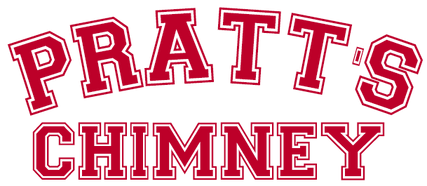Fireplace / Chimney Relining
What Is A Chimney Flue Liner?
The flue of your chimney is the passageway inside the chimney structure that carries the byproducts of combustion up and out of the home. Most chimneys built post 1920’s are lined with a clay flue liner consisting of clay flue tiles stacked on top of each other with a high temp mortar applied between each. While these tiles provide an excellent venting structure for your fireplace, there is a life expectancy of approximately 50 years with regular and routine maintenance.
When these tile structures degrade with age, crack, experience high heat events (chimney fires), or the mortar between the tiles begins to fall out, our CSIA Certified Chimney Technicians will often recommend a reline of the chimney flue system with a stainless steel liner.
What To Expect From A Fireplace Relining:
When relining the fireplace, we take into account the size of the firebox as well as the length of the chimney run to determine the size liner needed to properly draft your fireplace. If needed, the clay flue tiles are removed in order to install the appropriate size lining system and insulation. Stainless steel fireplace liner is run from the top of the smoke chamber to the top of the chimney. Stainless steel fireplace liners are insulated with either a poured chimney insulation, a wrapped chimney insulation, or lining that is manufactured and installed pre-insulated. The liner is then sealed with a 2000 degree rated mortar to the smoke chamber, and if the smoke chamber is corbeled, it is then parged smooth to allow smoke and gasses to flow into the liner seamlessly. By parging the smoke chamber, it allows the gasses and smoke to flow up the chimney without cooling down too rapidly, which assists in discouraging the build up of creosote on the walls of the smoke chamber and lining system interior. More often than not, the interior damper mechanism needs to be removed to properly seal the smoke chamber, so Pratt’s Chimney will install a top sealing, energy efficient damper system with cage surround. All material and debris are then removed from the property and disposed of by Pratt’s Chimney.
All stainless steel lining systems installed by Pratt’s Chimney come paired with a limited lifetime warranty that is one time transferable in the sale of the home.
It is important to note that after a stainless steel liner is installed, it is still crucial to maintain routine cleaning and/or inspection of the entire fireplace and chimney system. Our warranty requires annual inspection, with cleaning performed as necessary so we are able to ensure your system is operating efficiently and as safe as possible.
Scheduling Your Chimney Reline:
Often, your fireplace chimney liner will take one full day to complete with a crew. Flue relining can be completed all year round, allowing us to perform these services during the fire burning season! In extreme weather conditions, we will contact the homeowner to discuss rescheduling for our next available date. To begin your work, we will ask for a signed proposal to be returned to the office as well as a deposit. We will then be happy to schedule at the soonest availability.

